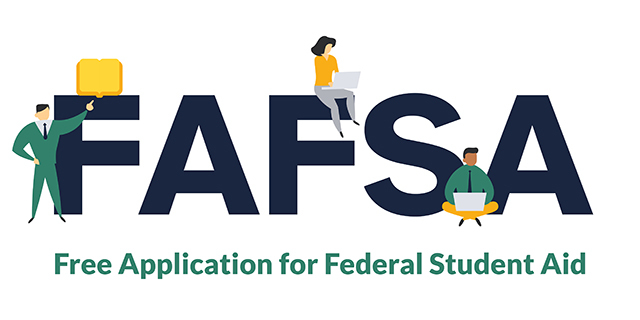Can you show me a “typical” college student today? I know I can’t find one. Some come from public high schools. Others attended private schools or were home-schooled. Some started out by taking courses online or at community colleges. Still others began their college studies while they were still in the military or after they returned home as veterans. Some of today’s students are in their teens, others in their fifties or older.
Some of those students end up at local regional colleges, or at large state schools. Others opt for innovative online schools like Thomas Edison State University or Western Governors University that use advanced technology to deliver courses to students around the globe. But make no mistake about it. All those college students, despite their differences, have one thing in common. They’re all looking for financial assistance.
That is why, more than ever before, the five letters that change lives for millions of students across the country are . . . FAFSA.
Why Fill Out the FAFSA
The Free Application for Federal Student Aid (FAFSA) is a must-do for students to be eligible for financial aid. Because government grants compose the vast majority of the multibillion dollar financial aid pool, it’s no surprise that FAFSA is a source of stress for students and their families.
It doesn’t have to be that way. The College Board has developed an eight-step map to help educators help students work through FAFSA. Even if you are a student or a parent – not an educator - this plan offers a good roadmap to follow.
How to Fill Out the FAFSA
1. Gather Documents First
Here’s a list of documents students should have in hand before they begin to fill out FAFSA. Students should get a U.S. Department of Education FSA ID. Here’s the FSA ID link.
2. Think about Taxes
Parents’ taxes are an important part in the FAFSA process. Getting taxes done by February 1st may be unrealistic, so last year’s taxes and this year’s paystubs can help create estimates. After February 3rd, the IRS Data Retrieval Tool becomes available, allowing students and parents to access the IRS tax return information needed to complete the FAFSA and transfer the data directly into their FAFSA from the IRS website. Plus, families can complete taxes without actually filing. So if they owe money, they don’t have to immediately cut a check to the IRS.
3. Find Quiet Time
It is helpful to break down the large application into smaller pieces. These do’s and don’ts can help:
-Take questions one at a time.
-Do read each question carefully and out loud. It improves question comprehension.
-Don’t multi-task. Turn off cell phones, music players and televisions.
-Do find a quiet place where FAFSA will have your full attention.
4. Stay Student-Focused
Parents often forget that the student always provides information. Parents are required to provide their information if the student is a dependent.
So when parents see a question that refers to “I,” they should remember that “I” is the student. “You” is also the student. When questions address parents, questions refer to “your parents.” That is where parental information goes.
5. Avoid Parent Traps
When you see “parents,” FAFSA is referring to the student’s biological or adoptive parents. When the parents are married, then the student and both parents complete the FAFSA.
If the parents are not together, things can get confusing. Check out this "Who Is My “Parent” When I Fill Out the FAFSA® Form?" resource to help address some commonly asked questions.
6. Keep Track of Deadlines
Every college has a different set of deadlines based on priority, merit, early decisions, etc. BigFuture by the College Board helps families sort through these deadlines with detailed college profiles and a free, customized action plan. And just like a student should raise his or her hands with a question in class, they should call a college with a specific question.
7. Profile CSS/Financial Aid PROFILE®
FAFSA opens the doors to federal aid. There’s also almost $50 billion in non-federal aid available – from colleges, states and private institutions. Some colleges and programs use the College Board’s CSS/Financial Aid PROFILE to help award these monies.
CSS/Financial Aid PROFILE is an online application that collects information used by almost 400 colleges and scholarship programs to award financial aid outside sources from the federal government. Families must complete the application; the College Board sends it to the colleges and scholarship programs they have chosen.
Here’s a list of colleges that use CSS/Financial Aid PROFILE® and where you go to complete the CSS/Financial Aid PROFILE®. One CSS/Financial Aid PROFILE® report costs $25. Additional reports are $16 each. There are fee waivers available for low-income families.
8. Practice Makes Perfect
To provide support, BigFuture created a no cost FAFSA webinar that walks students, section by section, through an actual FAFSA application. Families can access the free FAFSA webinar 24/7 on their terms.
FAFSA can change a student’s life forever. Following this map can help students and guide them to a better future.
Reduce Your Cost of College with Online Courses
One way to reduce your overall cost of college is by paying less for your general education courses online. StraighterLine classes start at $79 with our monthly subscription, are guaranteed to transfer to our 150+ partner colleges, and have been accepted for credit by more than 2,000 accredited colleges and universities.
Categories: Paying for College Financial Aid
Previous Post Next Post

